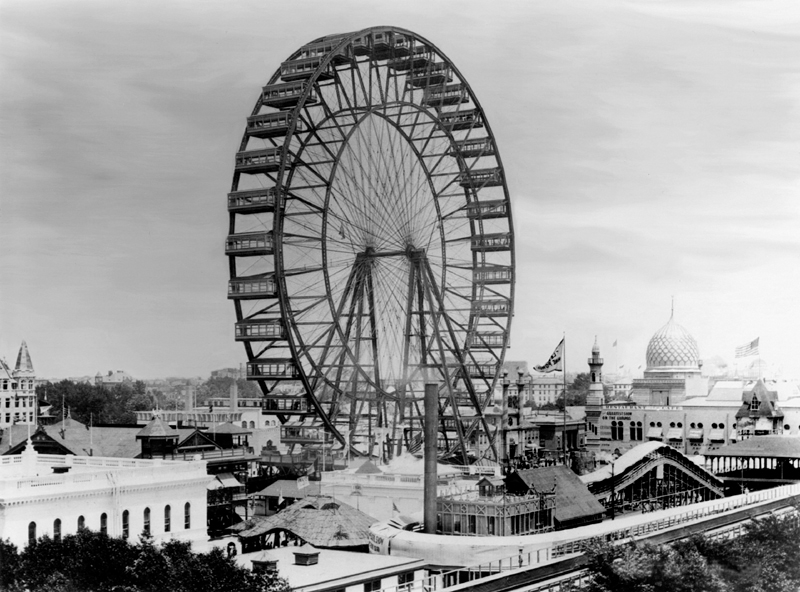History of Ferris Wheels

One may assume that the Ferris
Wheel is named after the person that has invented
it, George W. G. Ferris to be exact, but actually he
wasn't the inventor but rather innovator. According
to Klasey's article "Who Invented the Ferris
Wheel?", there are evidences that suggest a vertical
wheel in which people may ride as it spun has been
in use since the seventeenth century. An English
traveler named Peter Mundy has wrote about a wheel
in which around ten people can ride along its edges
in a swing, operated by a hand crank. Such rides
were common during the eighteenth and nineteenth
centuries. In 1849, New York State Fair had rides
called the "Rotary Swing" and in 1891, Atlantic
City, New Jersey, there were rides called the
"Roudabout."
If there were very similar
devices already in use, why did George W. G.
Ferris's name become the name of the modern Ferris
Wheel? George W. G. Ferris was an engineer who
proposed to the 1893 Columbian Exposition Planners,
the idea of building a giant amusement ride. This
ride will cost up to $362,000, feature 30-foot
wide, 250-foot diameter steel wheel in which more
than 2,100 people can ride. It would shadow the
marvel of Paris Exposition's Eiffel Tower. The
planners approved of the idea, and the modern Ferris
Wheel was made. By the end of the Columbian
Exposition, millions of people has ridden on it and
it quickly became a engineering marvel which lead to
the popularity of the Ferris Wheel today.
|
Original Ferris Wheel from 1893 Columbian
Exposition

Provided by: http://en.wikipedia.org/wiki/File:Ferris-wheel.jpg
|

